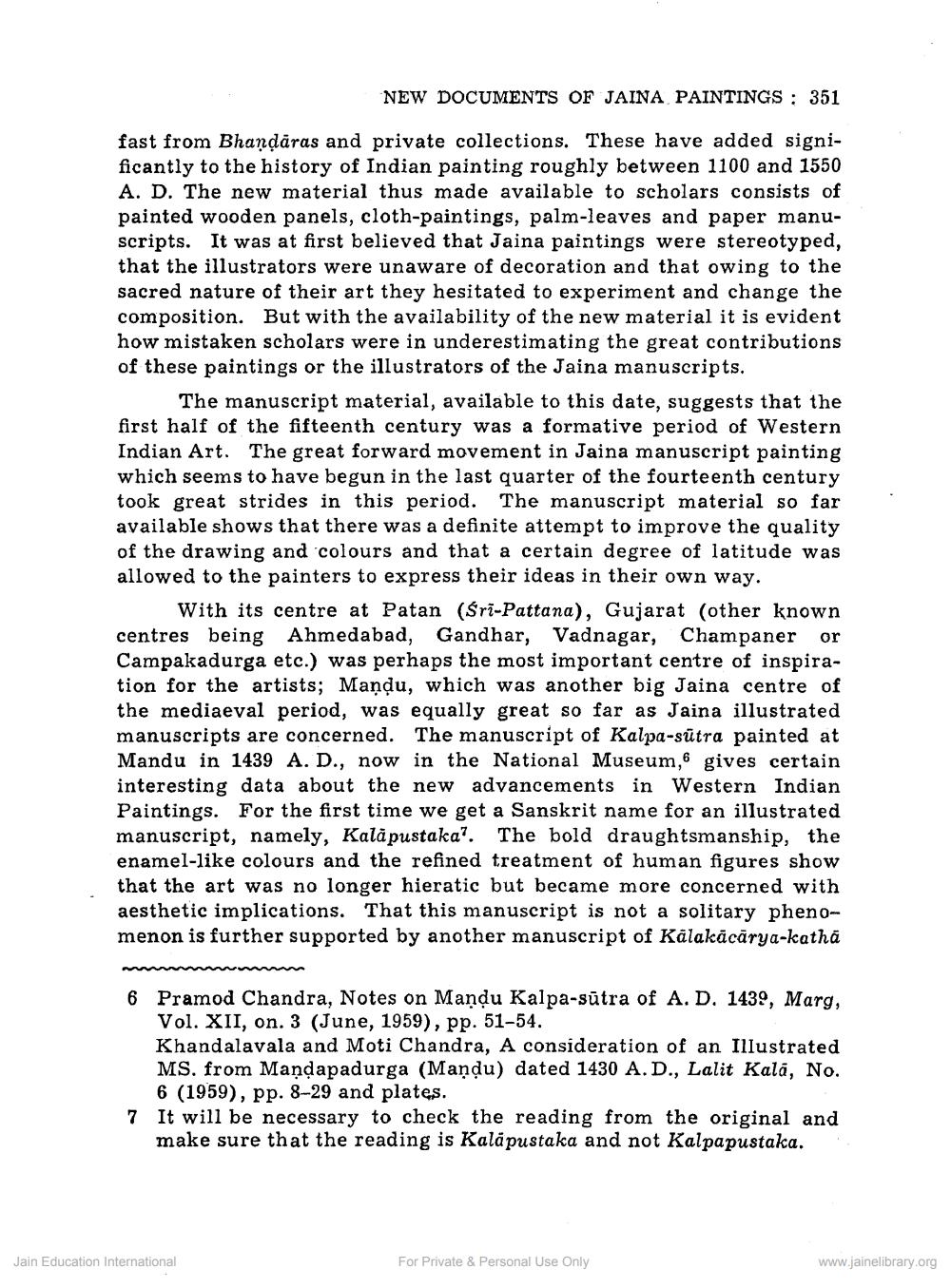Book Title: New Documents of Jaina Paintings Author(s): Moti Chandra, Umakant P Shah Publisher: Z_Mahavir_Jain_Vidyalay_Suvarna_Mahotsav_Granth_Part_1_012002.pdf and Mahavir_Jain_Vidyalay_Suvarna_ View full book textPage 4
________________ NEW DOCUMENTS OF JAINA PAINTINGS : 351 fast from Bhandaras and private collections. These have added significantly to the history of Indian painting roughly between 1100 and 1550 A. D. The new material thus made available to scholars consists of painted wooden panels, cloth-paintings, palm-leaves and paper manuscripts. It was at first believed that Jaina paintings were stereotyped, that the illustrators were unaware of decoration and that owing to the sacred nature of their art they hesitated to experiment and change the composition. But with the availability of the new material it is evident how mistaken scholars were in underestimating the great contributions of these paintings or the illustrators of the Jaina manuscripts. The manuscript material, available to this date, suggests that the first half of the fifteenth century was a formative period of Western Indian Art. The great forward movement in Jaina manuscript painting which seems to have begun in the last quarter of the fourteenth century took great strides in this period. The manuscript material so far available shows that there was a definite attempt to improve the quality of the drawing and colours and that a certain degree of latitude was allowed to the painters to express their ideas in their own way. With its centre at Patan (Sri-Pattana), Gujarat (other known centres being Ahmedabad, Gandhar, Vadnagar, Champaner or Campakadurga etc.) was perhaps the most important centre of inspiration for the artists; Mandu, which was another big Jaina centre of the mediaeval period, was equally great so far as Jaina illustrated manuscripts are concerned. The manuscript of Kalpa-sútra painted at Mandu in 1439 A. D., now in the National Museum,6 gives certain interesting data about the new advancements in Western Indian Paintings. For the first time we get a Sanskrit name for an illustrated manuscript, namely, Kaläpustaka?. The bold draughtsmanship, the enamel-like colours and the refined treatment of human figures show that the art was no longer hieratic but became more concerned with aesthetic implications. That this manuscript is not a solitary phenomenon is further supported by another manuscript of Kälakācārya-katha 6 Pramod Chandra, Notes on Maņdu Kalpa-sūtra of A.D. 1439, Marg, Vol. XII, on. 3 (June, 1959), pp. 51-54. Khandalavala and Moti Chandra, A consideration of an Illustrated MS. from Mandapadurga (Mandu) dated 1430 A.D., Lalit Kala, No. 6 (1959), pp. 8-29 and plates. 7 It will be necessary to check the reading from the original and make sure that the reading is Kaläpustaka and not Kalpapustaka. Jain Education International For Private & Personal Use Only www.jainelibrary.orgPage Navigation
1 2 3 4 5 6 7 8 9 10
